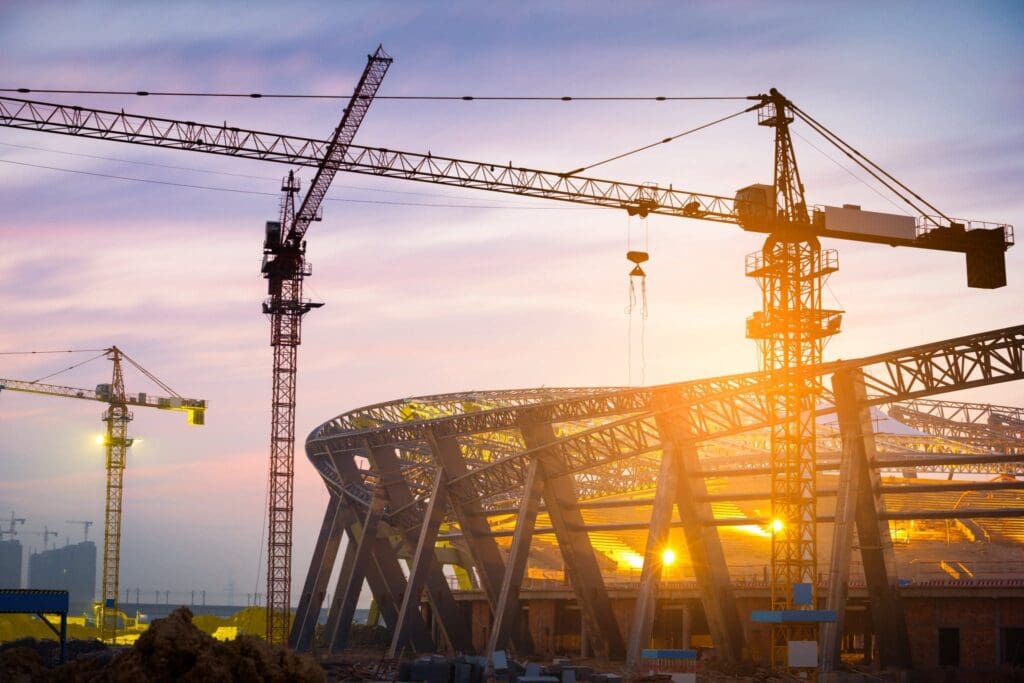Tower cranes are key to building higher and lifting heavy materials. While it’s true that all cranes serve a similar purpose, tower cranes excel in these categories. You can often find tower cranes on or near tall buildings as they are used to transport bundling materials and generators. Operating a tower crane, or any crane for that matter, requires certification and training. Learn how to operate a tower crane and how to get certified in this tower crane operator handbook.
Table of Contents
Types of Cranes
You may be familiar with the different cranes in use today, such as a crawler crane or a bulk-handling crane. Regardless of the names these cranes go by, they all fall under two crane types, static (or fixed) and mobile. As you could guess, mobile cranes are able to move about a worksite while static cranes are fixed in a position.
1. Static Cranes
Construction crews use static cranes in situations when the load capacity or reach needed exceeds the capacity of a mobile crane. Being that static cranes are not mobile, they must be transported and assembled on site. Examples of static cranes include:
- Tower cranes
- Bridge/Overhead cranes
- Jib cranes
2. Mobile Cranes
If a large load needs to be transported on a worksite, crews will use mobile cranes. Compared to static cranes, mobile cranes are much more versatile, requiring no assembly and easily transportable. Using tracks or wheels, mobile crane operators can navigate rough terrain easily. Examples of mobile crase include:
- Rough terrain cranes
- Truck-mounted cranes
- Crawler cranes
Must-Have Heavy Equipment For Construction
Responsibilities of an Operator
As a crane operator your responsibilities go beyond lifting heavy loads. You’ll need to perform daily vehicle safety checks, understand the tasks you’re being asked to perform, and maintain safe usage of the crane. While operating the crane, you’ll need to be sure there are no obstructions imminent. Being higher up in a crane cab can help you see practically everything around you, but don’t forget to check above for power lines. Take tower crane safety seriously. You’re responsible for the safety of those around you as well as yourself.
Operator Qualifications
Before becoming a crane operator, you’ll need to have some qualifications and certifications. You must be at least 18 years old, hold a driver’s license, and be physically able to operate a crane. If you have all three of these qualifications then all you need to do is get certified.
Lifting Operations
There is much more to lifting heavy loads than simply pressing a pedal or moving a lever. Each lift must be planned thoroughly to minimize accidents. Planning out a lift is also a great opportunity to ensure you’re using the right equipment and not exceeding load capacity. Similarly, if you’re operating in a hazardous or difficult environment, planning out your lift operation could save time and help avoid accidents.
Wind Restrictions Taking Crane Out of Service
Despite how powerful tower cranes are, they are susceptible to strong winds. Currently, there is no standard wind speed for crane operations you should stop for. However, experts recommend you stop operations if wind speeds reach or exceed 20 mph. It may be a good idea to delay lifts if wind speeds are near 20 mph or continue to pick up speed but remain under 20 mph. At that speed, even small lifts can create a dangerous situation. If you must continue operations with wind speeds at or exceeding 20 mph, proceed with caution.
Hand Signals
Noise levels on a construction site can become a problem for communication. To safely operate in some situations, you’ll need to be familiar with hand signals. Hand signals may differ from the personnel or company you are working with. It’s important to meet with your signal person before an operation to ensure you are on the same page. Properly executed hand signals will help you stay safe on any site.
Find Crane Training & Certification At HEC
Although HEC doesn’t train on tower cranes, your path to a rewarding career as a crane operator starts at HEC with our programs that train on mobile cranes and lattice boom crawler cranes. Our curriculum is designed to help you learn, grow, and find success in the heavy equipment industry. Don’t think you have time to go back to school? You can complete our mobile crane program in as little as three weeks. Not only will you be in front of employers faster, but you’ll have the knowledge, skill, and certifications they’re looking for. With locations across the country, you’ll be able to find a campus near you! Don’t put off getting started on a new career. Get trained, get certified, and get started with HEC.

